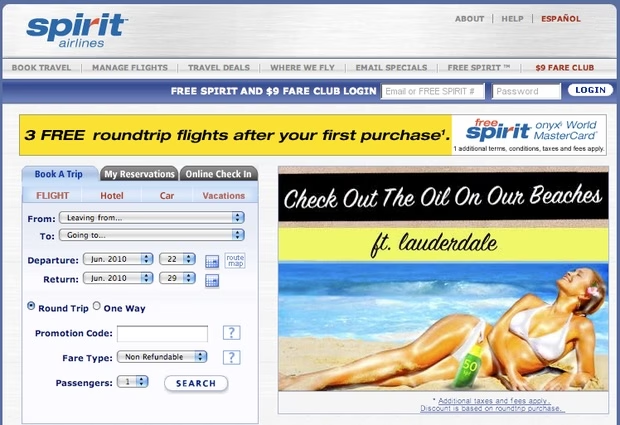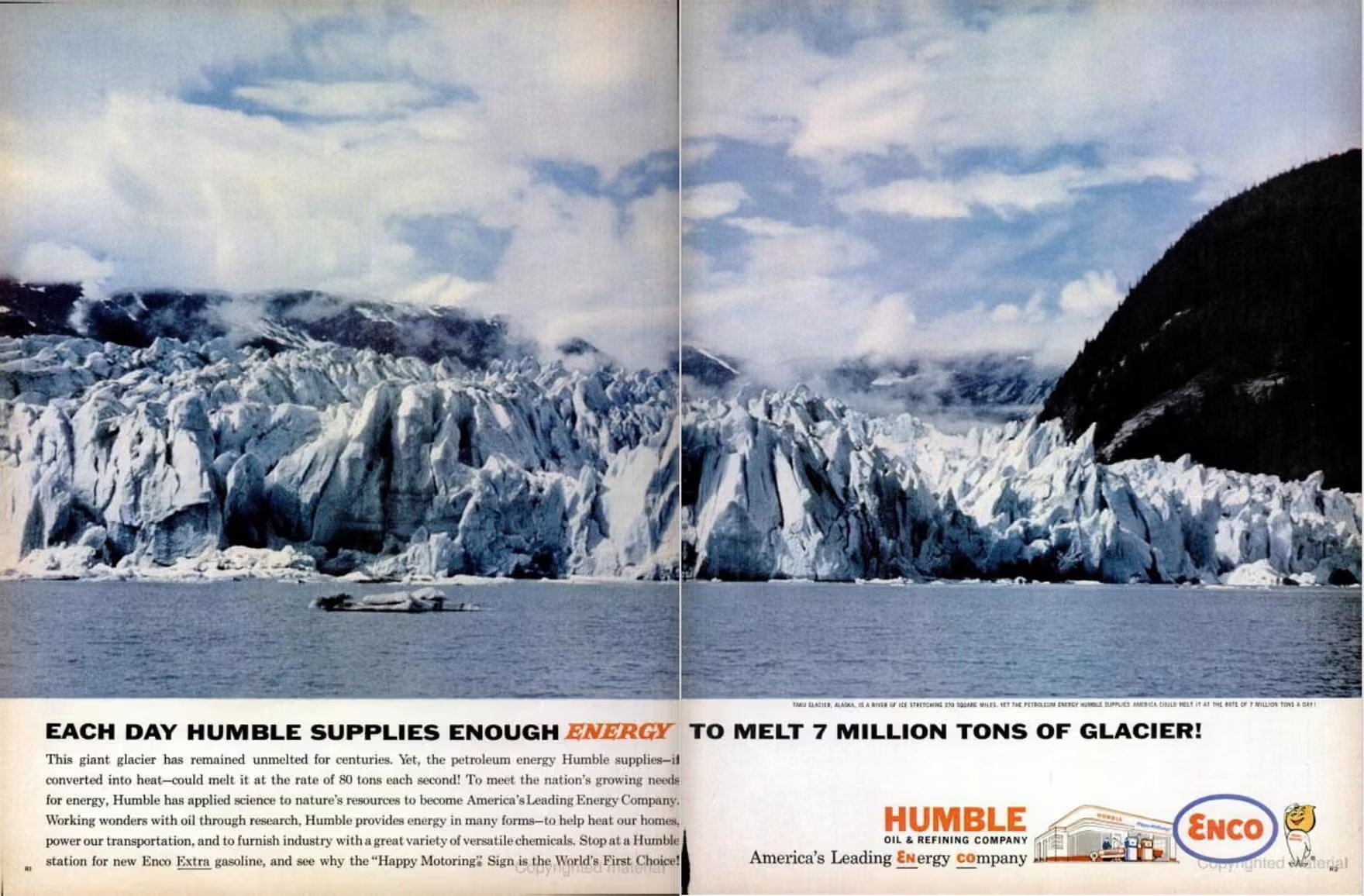One of my guilty pleasures is looking back at old ads and seeing just how poorly they’ve aged. From fashion to cigarettes, times have changed, and that (thankfully) goes for sustainability too.
In the early days of environmental awareness, brands scrambled to position themselves as part of the solution. But with limited understanding and even less accountability, many of these ads now read like satire. Let’s take a look at five early sustainability-related campaigns, how they portrayed eco-consciousness back then, and what they reveal about the evolution of green marketing.
1. Spirit Airlines Oil Spill
This campaign is all sorts of tasteless. Starring women in bikinis, it appeared to make light of the BP Deepwater Horizon oil spill—the largest in US history—to promote various beachy destinations. In a series of banner ads, the copy read, “Check out the oil on our beaches”, followed by “BEST PROTECTION $50* OFF”, with the B and P highlighted in yellow. Not even subtle. Clicking through left you with the final message, “You won’t be disappointed”.
How it aged:This one didn’t fly. I guess they thought it would be funny, but it fell flat then and it falls flat now. I can’t imagine being on the Spirit Airlines team and seeing those ads get approved.
2. Texaco’s Ocean Ad
Texaco laid it on thick with this one. But after the first thirty second montage of people and nature frolicking the ocean, I almost believed the line, “Texaco will never willfully pollute the beaches of our world”. Call me cynical, but 18.5 billion gallons (69 billion litres) of toxic water in the Amazon might say differently.
How it aged: We see right through it. The environmental destruction associated with oil production is no secret anymore, nor is the knock on effect of everything we do with said oil afterwards. An ad isn’t going to change that.
3. Chevron’s “People Do” Campaign
Chevron’s “People Do” campaign suggests that Chevron employees are out in the woods caring for wildlife and protecting nature. It pulled on the heartstrings and positioned the company as a steward of the environment. It’s also one of the most perfect examples of greenwashing I’ve ever seen.
How it aged: Not great! At the time, Chevron was facing criticism for its environmental practices, and the campaign was widely seen as greenwashing. The disconnect between the ad’s message and the company’s actions made it a cautionary tale in sustainability marketing.
4. Humble Oil’s Glacier Ad
Here we have an ad bragging about how the energy produced by Humble Oil (now ExxonMobil) could melt 7 million tons of century-old glacier ice at an alarming rate. They’re not even trying to greenwash, it’s just a really cringey truth.
How it aged: Tone deaf to say the least. I don’t know about you but I don’t think boasting about how quickly you can destroy natural wonders is a great look.
5. DDT Let’s Put It Everywhere
Chances are you’re like me and have read about DDT in the past but never actually seen it advertised. In case you missed it: DDT is a synthetic pesticide widely used from the 1940s until it was banned or restricted in many countries starting in the 1970s due to its environmental and health impacts. These include:
- Bioaccumulation in wildlife, especially birds like bald eagles and peregrine falcons, leading to thinner eggshells and population declines.
- Persistence in ecosystems, remaining toxic in soil and water for decades.
- Disruption of food chains, as insects and aquatic organisms were wiped out or contaminated.
- Human health risks, including potential links to cancer and reproductive issues through long-term exposure.
How it aged: Like a parody. Knowing what we know now, it’s wild to watch an ad where people rub their dog with DDT and pour it into a swamp. I suppose you can’t fault them for not knowing at the time, but that same excuse is the root of so many environmental catastrophes that it’s lost its edge with me.
What We’ve Learned
These ads offer a snapshot of how sustainability was portrayed in its early days, including all the half truths, greenwashing and ignorance. Things still aren’t perfect, but I have to say I’m glad we’ve made progress. If you leave this article with anything, let it be this:
- Authenticity matters: Consumers are better than ever at spotting the difference between genuine action and empty promises.
- Accountability is key: A beautiful ad means nothing if the brand’s practices don’t match.
- Progress is possible: We’ve come a long way since the 1940s and it’s important to keep getting better.
Today, sustainability marketing is more sophisticated, data-driven, and transparent, evolving from vague promises and empty statements to measurable commitments. That said, it will only ever be as good as we make it. Let these early ads serve as a reminder to stay critical, stay curious, and never stop asking: is this real impact—or just good storytelling?
If history has taught us anything, it’s that the truth always comes out—eventually.





Leave a Reply